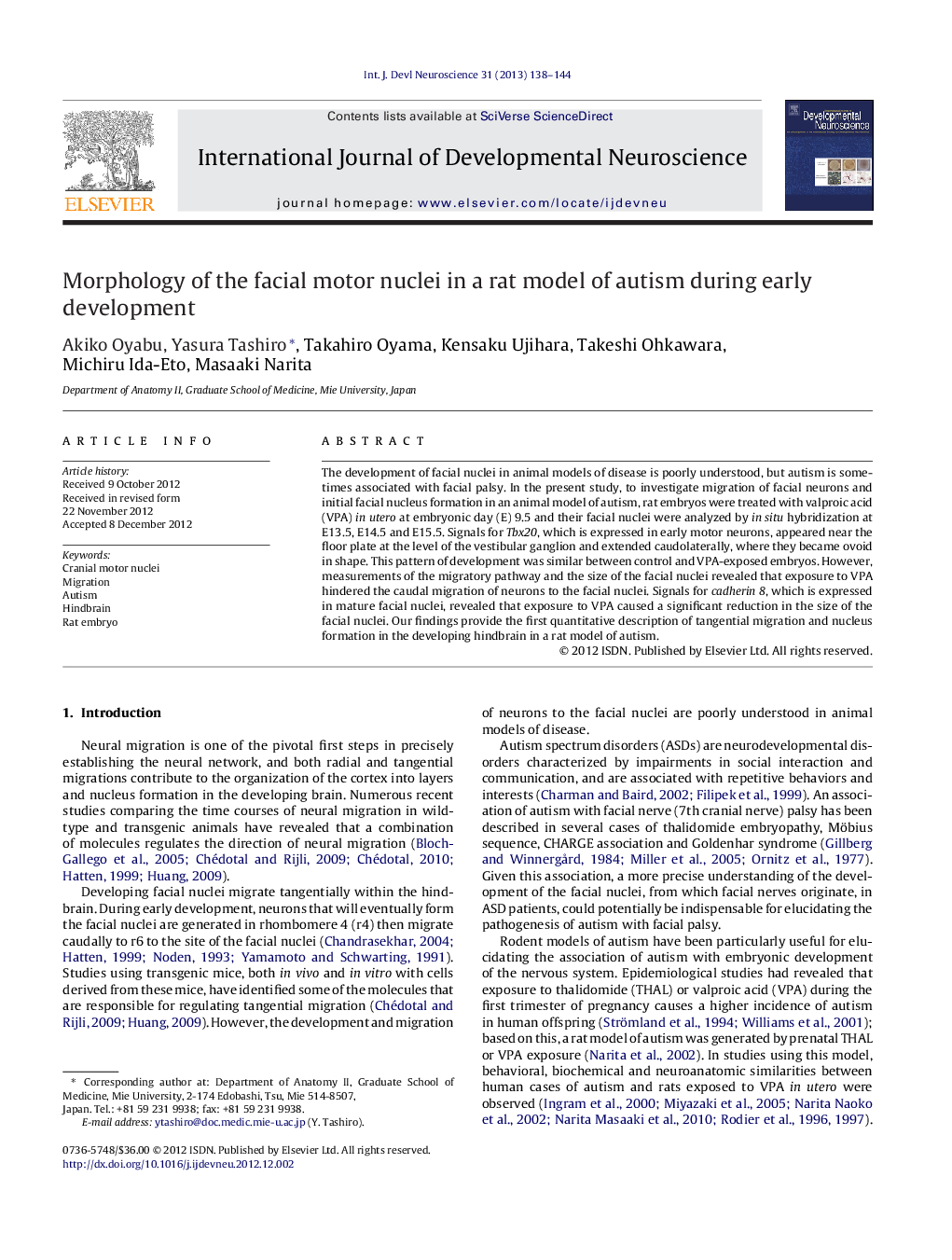| Article ID | Journal | Published Year | Pages | File Type |
|---|---|---|---|---|
| 2785932 | International Journal of Developmental Neuroscience | 2013 | 7 Pages |
The development of facial nuclei in animal models of disease is poorly understood, but autism is sometimes associated with facial palsy. In the present study, to investigate migration of facial neurons and initial facial nucleus formation in an animal model of autism, rat embryos were treated with valproic acid (VPA) in utero at embryonic day (E) 9.5 and their facial nuclei were analyzed by in situ hybridization at E13.5, E14.5 and E15.5. Signals for Tbx20, which is expressed in early motor neurons, appeared near the floor plate at the level of the vestibular ganglion and extended caudolaterally, where they became ovoid in shape. This pattern of development was similar between control and VPA-exposed embryos. However, measurements of the migratory pathway and the size of the facial nuclei revealed that exposure to VPA hindered the caudal migration of neurons to the facial nuclei. Signals for cadherin 8, which is expressed in mature facial nuclei, revealed that exposure to VPA caused a significant reduction in the size of the facial nuclei. Our findings provide the first quantitative description of tangential migration and nucleus formation in the developing hindbrain in a rat model of autism.
► Exposure of rat embryos to valproic acid (VPA) models autism. ► Control and VPA-exposed embryos show similar neural migration patterns. ► However, VPA hinders caudal migration of neurons to facial nuclei. ► Thus, embryonic exposure to VPA significantly reduced the size of facial nuclei. ► Disruption of facial nucleus development might underlie autism with facial palsy.
